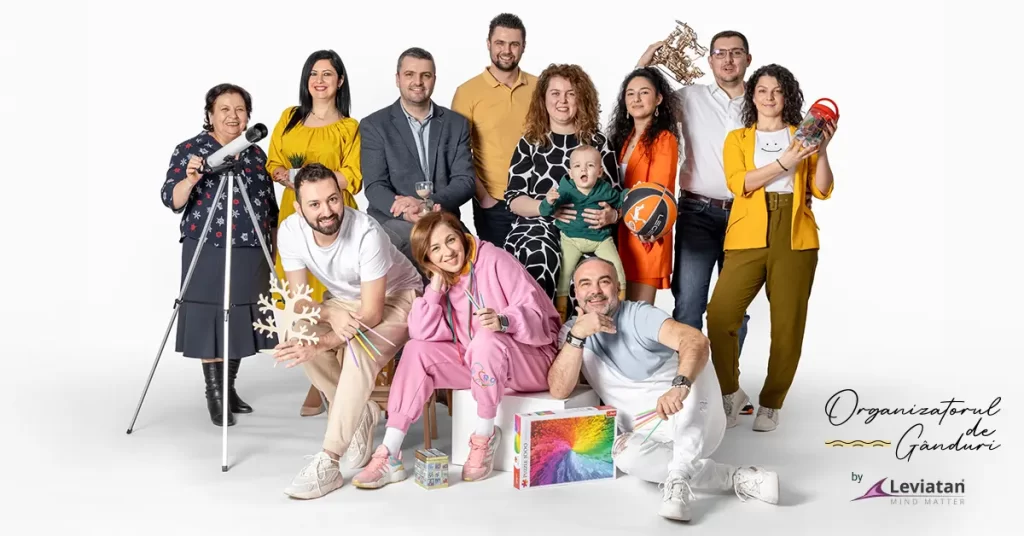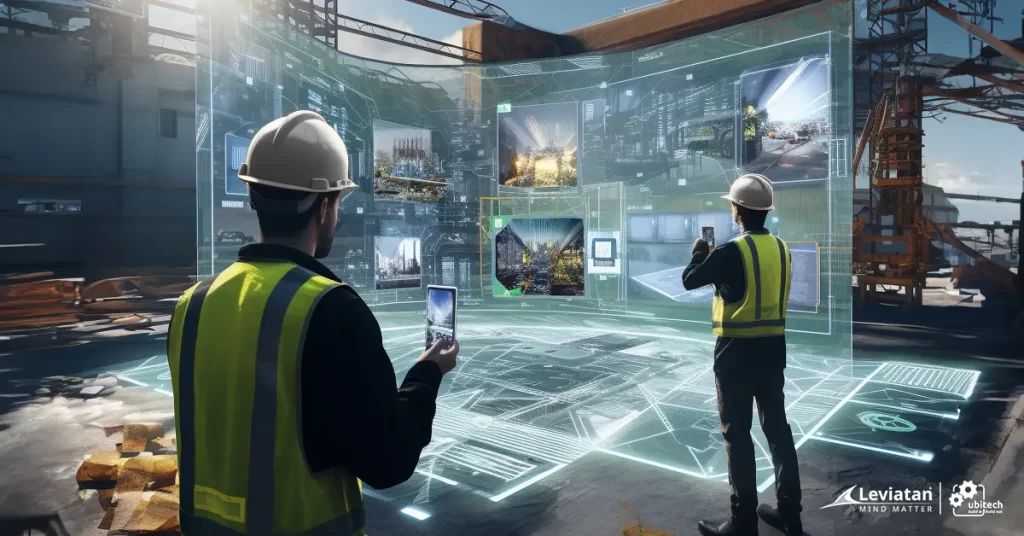Starting from the design of buildings, Leviatan Design aims to exceed the assumed standards so that each project developed becomes a benchmark of quality. Focused on integrated services of architectural design, structural engineering, and MEP engineering, based on the BIM method, advanced technologies, and 3D modeling, the company aims to offer smart and customized solutions for any project by providing integrated civil engineering and construction solutions, from concept to completion. We learn about the profile market and how the field of architecture has evolved from Cătălin Podaru, CEO of Leviatan Design & Ubitech Construcții.
Let’s start with a retrospective of the last 12 months. What has happened during this time in the architecture sector in Romania, and where are we heading?
The architecture sector in Romania has experienced significant evolution in the last 12 months, reflecting the trends and changes in the industry globally.
With a significant increase in the local market and trends that align with global standards and expectations, Romanian architecture companies have maintained a steady development pace and focused on innovation.
During this period, we noticed an increased interest in developing sustainable projects and using the BIM methodology, while modular architecture and the integration of nature into design have shaped the trends of this industry.
Technological progress, concern for sustainability and adaptability, and anticipated economic growth in the sector indicate a positive and promising direction for this field.
We recently noticed that you have become one of the supporters of the NetZeroCities project. What does this concept entail, and what does the involvement of the company you represent consist of?

The NetZeroCities project represents an ambitious initiative aimed at developing climate-neutral smart cities in Romania. Leviatan Design joined this project at the invitation of the Technical University of Civil Engineering Bucharest (UTCB) to contribute to the development of sustainable projects.
In this collaboration, Leviatan specialists will provide consultancy and advice to the UTCB project team for developing Digital Twin models, both for the EFdeN prototype building and for an urban single-family house.
Specifically, Leviatan specialists will support the students engaged in this project in the 3D modeling process of buildings, will monitor the coordination of design specialties, and will offer advice for extending the 3D models, integrating the point cloud into the dedicated Digital Twin platform.
Through this collaboration, Leviatan Design reaffirms its commitment to promoting private sector involvement in the training and development of future construction specialists, also contributing to the development of sustainable projects in Romania.
From your perspective, what should a project that meets the NetZeroCities standards look like, and how close are we to achieving such a goal?
A project that meets the NetZeroCities standards focuses on creating an urban environment that minimizes energy consumption and maximizes efficiency.
In such a project, buildings and infrastructure are designed with high-quality insulating materials and advanced construction technologies, ensuring that every element of the project contributes to intelligent energy management.
Instead of relying on traditional energy sources, such a project prioritizes the use of renewable energies, such as solar, wind, and geothermal energy.
How do you feel about current clients? Do you think they are ready to accept such an approach?
Romania is at a transition moment. There are positive signals indicating openness and readiness for adopting NetZeroCities projects, but it is essential to continue efforts to educate, inform, and support these initiatives to ensure widespread adoption and successful implementation.
We believe that the transition to NetZeroCities projects could offer public authorities the opportunity to integrate a series of sustainability best practices into future projects.
Changing mindsets and adapting to new technologies and standards can be slow, as there is a natural resistance to change. However, we believe that, over time, clients will be prepared to accept such an approach.
It would probably be interesting to monitor the reaction time of suppliers and material manufacturers who, as we already know, have been testing alternative solutions to standard construction materials for a few years. Have you noticed major changes in this area recently?
The last period has marked a significant evolution in the behavior of suppliers and construction material manufacturers. Adapting to market demands and new sustainability trends has become a priority, and this has been reflected in the products and solutions introduced to the market.
We have observed an increase in investments in research and development, focusing on producing more ecological and energy-efficient materials. For example, the introduction of low-carbon concrete and advanced insulating materials represented a major step in the right direction.
In addition to innovations, recycling and reuse have become more prevalent, indicating an approach towards a circular economy and an increased awareness of the need to reduce environmental impact.
These changes are a clear sign that the Romanian industry recognizes the importance of adapting to the new market realities and that there is a real will to contribute to a more sustainable future in construction.
Speaking of the future, we cannot ignore the phenomenon of artificial intelligence. Have you integrated AI into the processes you carry out?

We consider that adopting artificial intelligence solutions will have a revolutionary impact on all levels, as we announced at the beginning of this year, during the Construction – ‘the engine’ of the economy conference, organized by eDevize.
The process of integrating artificial intelligence solutions is complex, but it has offered us the opportunity to develop several extremely useful projects for our team. The BIMaria avatar is one of our projects developed based on artificial intelligence, presented for the first time at this year’s edition of the InnoConstruct event, which offers us a viable solution for onboarding and mentorship.
Other projects we have developed involve using artificial intelligence for the intelligent extraction of data from standard documents (invoices, FAMs, etc.). We are already using AI copilots to analyze data and explore different use cases on workflow streams to continue the automation process, and our programmers at eConfaire use the AI copilot for assisted code writing.
In this way, our specialists have more time for creative solution exploration and other essential aspects of the design process, thus taking an extra step towards achieving sustainability goals.
What do you think about process automation and such integrations at the team level? Have you resorted to such solutions so far?

Currently, automation is present in all our processes. Some of these are in an advanced phase of this process, and others are under development.
They allow for the rapid collection and processing of field data, parametric design solutions for creating 3D models, automation of public project estimates, the procurement process, reading and processing data from invoices, and much more.
Regarding current strategies, how do you feel about the current market, and what do you think about the strategies architects are currently adopting?
The field of architecture is in continuous evolution, characterized by adaptability and innovation. We have observed a clear tendency towards integrating technology and sustainable solutions into design projects, thus reflecting global concerns for sustainability and efficiency.
Romanian architects have started to adopt holistic strategies, focusing on creating spaces that meet not only functional needs but also aesthetic and ecological ones. There is a deep understanding that architecture is not just about buildings but about creating a living and working environment that improves life quality.
Moreover, multidisciplinary collaboration has become the norm. Architects work closely with engineers, urban planners, and other specialists to develop integrated solutions that add value to projects. This interdisciplinary approach ensures that every aspect of the design is considered, from energy efficiency to social impact.
We believe that the strategies adopted by Romanian architects reflect professional maturity, are visionary, and future-oriented. There is recognition of their responsibility in shaping the urban landscape and creating spaces that serve future generations in a sustainable and innovative manner.
What do you think about the evolution of this sector in our country in the coming period: which area should we focus our attention on, and what do you consider to be the top 3 most important construction projects in our country that are currently underway?
We expect the architecture field to continue to grow, given the increasing interest in this sector for sustainable development, energy efficiency, and the integration of advanced technologies into projects. Also, we believe that, in the next period, it is worth paying increased attention to sustainable constructions and smart buildings.
Without naming specific projects, we can confirm that there are multiple important projects underway in Romania, in areas such as transportation, renewable energy production, medical, educational, and military infrastructure, which are essential for Romania’s development.
In a few words, we invite you to describe what the project you would propose to authorities for a healthier environment tomorrow would look like?
Our proposal to local authorities would be the creation of a multifunctional community center that emphasizes sustainability, ecological education, and environmental protection for workshops, seminars, and courses on recycling, composting, and other environment-related topics.
The center could be located in an existing park and would primarily aim to educate the community about the importance of protecting the environment and promoting a sustainable lifestyle. The building itself would be an example of green architecture, using recycled materials and eco-friendly technologies.
The roof could be equipped with solar panels to power the center, while a rainwater collection system could be used for irrigating the gardens and sanitary facilities.
The project could also play an important role in extracting best practices for other areas and developing new sustainable projects.
From the perspective of your team and activity, what types of materials/solutions would you like to see more often in projects and on construction sites?
In the current context, where sustainability and energy efficiency are essential, we recommend an innovative approach in selecting materials and solutions for projects.
Materials with a reduced carbon footprint, such as eco-friendly concrete, can successfully join integrated solar panels on facades to transform buildings into sources of renewable energy.
Also, high-efficiency energy windows, alongside recyclable materials such as reused aluminum, become standard, while smart lighting systems optimize energy consumption.
Another important solution refers to implementing the Digital Twin model in the exploitation phase of the construction, which would add extra value in terms of sustainability and durability of the construction, ensuring high energy efficiency and a more circular economy where resources are used and reused better.
_______
Interview published in the magazine TOP 100 most powerful architecture and design firms in Romania, printed by IBC Focus agency.


